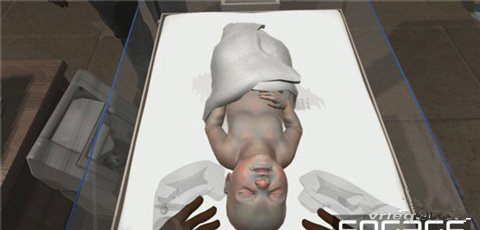Direct CES 2017: Oxford University launches VR medical aid education platform ENGAGE
Although the medical care is now very developed, medical assistance can't help everyone in time. Time is life. The telemedicine rescue platform may help more people. At the recent 2017 CES show, researchers at the University of Oxford's Life-Saving Instrction for Emergencies showcased a VR education platform that enables people anywhere in the world to receive assistance. education. The ENGAGE education platform, developed by Immersive Education Ltd, uses HTCVIVE to create an interactive VR classroom that can accommodate up to 30 people per classroom, and teachers can provide real-time guidance to students. The DEMO project at CES is primarily intended to demonstrate the enormous potential of VR training professionals in the healthcare field. At present, infant mortality rates in Africa are still high, with one in ten infants aborting. The LIFE project team hopes to improve the status of infant life in Africa by developing a mobile application with the Engage platform. However, the potential of the Engage platform far exceeds the medical field. The Engage team also used the platform to develop a display system called Immersive FX that allows the presenter to interact interactively in a virtual environment. For example, lecturers in earth science show students the surface of Mars. In China, nervous system drugs are also one of the drugs with the most rapid sales growth in recent years. In 2002, nervous system drugs occupied 5.9% of the entire pharmaceutical market share, and the total sales amount increased by 9.4%. buy nootropics,nootropics benefits,nootropics for adhd,nootropics for weight loss,nootropics supplements Shaanxi YXchuang Biotechnology Co., Ltd , https://www.peptide-nootropics.com
With the increasing trend of urbanization and aging, the elderly population in China has exceeded 120 million, and the incidence of geriatric diseases, especially mental diseases, is increasing year by year. With the increase of residents' income, the elderly's requirements for quality of life also increase. As a result, the demand for drugs to treat mental illnesses such as Alzheimer's has soared. In WHO drug classification, psychotropic drugs and nootropic drugs are grouped into one class. We briefly analyzed the development trend of this class of drugs through the clinical drug use data collected from more than 300 domestic key hospitals by Chinese Pharmaceutical Association.
The overall market size of this class of drugs is about 1.22 billion yuan, the consumption sum increased by 5.0% in 2002, but the sales quantity increased by 11.2%. The main reason why the consumption sum did not increase with the sales quantity is that several main varieties of this class of drugs, such as piracetam, cobalt bin amide and ginkgo biloba leaf, etc. In 2002, the price of selling units fell sharply due to bidding. Among these drugs, ginkgo biloba preparation occupies the largest market share, accounting for more than 1/3 of the market share, ganglioside ester and cobalt bin amide combined also occupy nearly 1/3 of the market share, piracetam and other "sitan" drugs occupy nearly 10% of the market share, the rest of the drugs occupy less than 5% of the market share. At present, more than 20 ginkgo leaf production enterprises, piracetam production enterprises more than 70, have entered the stage of price competition, profit repeatedly diluted.
In the first-line varieties, except ginkgo biloba leaves preparation maintained vigorous vitality, the growth of other varieties were weak, especially the traditional variety piracetam suffered from bidding